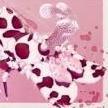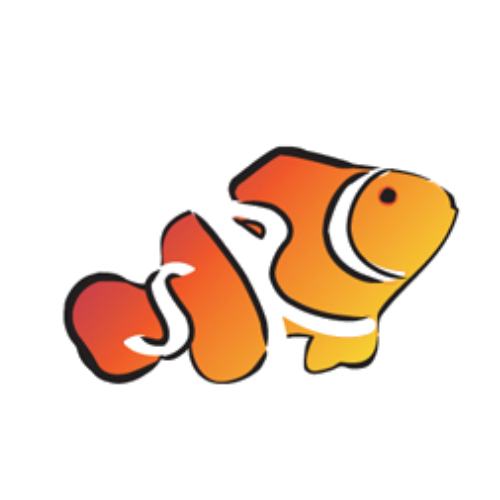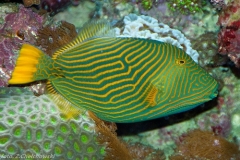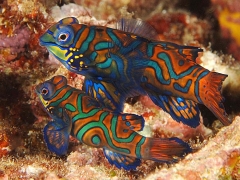-
Posts
8,253 -
Joined
-
Last visited
-
Days Won
31
Content Type
Profiles
Forums
Gallery
Everything posted by Harlequinmania
-
When the buying stop the killing will also stop or at least greatly reduce ... That's what responsible reef keeping is about , being responsible to gather as much knowledge in this hobby and not buying due to impulse. There is so much things to learn in this hobby which also make it so interesting even to those which has been reefing for years find it almost endless...
-
picture mean a thousand words.. Photos please..
-
Sea-ice algae -- the important first rung of the food web each spring in places like the Arctic Ocean -- can engineer ice to its advantage. The same gel-like mucus secreted by sea-ice algae as a kind of antifreeze against temperatures well below minus 10 C is also allowing algae to sculpt microscopic channels and pores in ice that are hospitable to itself and other microorganisms. View the full article
-
Sea-ice algae -- the important first rung of the food web each spring in places like the Arctic Ocean -- can engineer ice to its advantage. The same gel-like mucus secreted by sea-ice algae as a kind of antifreeze against temperatures well below minus 10 C is also allowing algae to sculpt microscopic channels and pores in ice that are hospitable to itself and other microorganisms. View the full article
-
Recent molecular phylogenetic analysis has shown that the marine animals known as peanut worms are not a separate phylum, but are definitely part of the family of annelids, also known as segmented worms. This is a classification that seemed questionable in the past in view of the fact that peanut worms -- or the Sipunculidae, to give them their scientific name -- have neither segments nor bristles. The latter are considered typical characteristics of annelids, which include more than 16,500 identified species and to which our common earthworm belongs. View the full article
-
Researchers have combined two molecular imaging technologies to create an instrument with incredible sensitivity that provides new, detailed insight into dynamic molecular processes. Two physics professors combined their expertise in single-molecule biophysics -- fluorescence microscopy and optical traps -- to create a unique instrument that measures both a DNA-regulating protein's motion and conformational changes as it acts. View the full article
-
Click through to see the images. As I promised in my last editorial here is an update on the progress of my 10-foot, 500-gallon freshwater community aquarium. Along with a series of photos I just took I'll record how I maintain the biotope, with some water quality measurements. The relatively high temperature, use of CO2, feeding regime, and biweekly water changes are mostly dictated by the needs of the 9 discus fish. Feeding I generally feed the tank twice a day. In the AM I feed discus fish flake food, which all of the fish enjoy. In the PM I feed frozen blood worms, which I feed every 10-minutes until gone. I do this to make sure that the discus fish get enough to eat. They are slower feeders than some of the rest of the fish, and two of the discus will only eat blood worms. Temperature I keep the temperature at 84 degrees F. Discus fish do best at a temperature of 82 to 88 degrees F. I did have a small a school of White clouds (Tanichthys albonubes) which do best at a water temperature between 60 and 72 degrees F., and clearly a sustained 84 degrees was too high for them. Water quality By the use of CO2, injection, and controlled by a pH controller I maintain the pH at between 6.5 and 6.8. I change about 50% of the water every two weeks. Fortunately, the local water is soft and free of nitrates and phosphates. With the water changes and heavy plant growth, especially from the Java fern (Microsorum pteropus), and various Cryptocoryne varieties I'm able to keep the nitrate concentration below 10-PPM, and general hardness below 5-dKH. Interestingly, the Java fern has now attached itself to the outlet of the EcoTech. See below! Lighting The aquarium is illuminated by 10, 56-watt T-5, 10K bulbs. The photoperiod is 12-hrs. Filtration The aquarium is filtered by a large Eheim canister filter, in which the filter media has not been changed in over a year. I do not change the media because I do not want to interfere with its ability to convert toxic ammonia, and nitrites into nitrates. I also use a smaller canister filter filled with activated carbon, which is changed every two weeks. Following is a series of pictures just taken: Notice the small army of Kribensis cichlids (Pelvicachromis pulcher), a product of an in tank spawning, and an event that I hope will not repeat itself. I made no attempt to facilitate this. It is a large tank, but I certainly do not want any more of these delightful cichlids. Furthermore, trying to catch them is close to impossible. Perhaps I can convince the current school to practice birth control. Also pictured above is one of a pair of red lined torpedo barbs (Puntius denisonii). These fast swimmers come from western India, and are quite peaceful. View the full article
-
Click through to see the images. Brian reveals specific details on how he successfully breeds these beautiful fish, giving you enough information to try it for yourself. As always, just send any questions to AmericanReef@me.com or sound off in the comments below. Watch The Video... View the full article
-
Fossil bones discovered in Texas are from the left wing of an ancient flying reptile that died 89 million years ago, representing what may be the world's earliest occurrence of the prehistoric creature Pteranodon, says paleontologists. If the reptile is pteranodon, it would be the first of its kind discovered as far south as Texas within the ancient Western Interior Seaway. View the full article
-
Some shark species are able to navigate to specific locations up to 50 km away, a new study has found. Re-analyzing tracking data from tagged sharks, ecologists found that while some species such as blacktip reef sharks swim in a pattern known as a "random walk," others such as tiger sharks can at times hunt for prey or mates by using "directed walks," accurately navigating long distances across open ocean, often at night. View the full article
-
Minimum Tank Size: 50 gallonsCare Level: EasyTemperament: AggressiveReef Compatible: NoWater Conditions: 72-78° F, dKH 8-12, pH 8.1-8.4, sg 1.020-1.025Max. Size: 1'Color Form: Black, Blue, Green, Orange, YellowDiet: Carnivore Origin: Fiji, IndonesiaFamily: Balistidae The Undulate Triggerfish, also known as the Orangelined Triggerfish or Orangetailed Triggerfish, has an attractive, emerald-green body with yellow-orange vertical stripes. A 50 gallon or larger aquarium with large pieces of rock to form caves is ideal. It will rearrange the aquarium landscaping and rocks. It vocalizes using a "grunting" sound. It is a hardy fish, but aggressive towards other fish. The Undulate Triggerfish needs a varied diet of meaty foods including; squid, krill, clams, small fish and hard shelled shrimp to help wear down their ever growing teeth. ** Extracted from livingreefs.com
© www.sgreefclub.com
-

Spotted mandarinfish ( Synchiropus picturatus )
Harlequinmania posted a gallery image in Mandarins & Dragonets
FAMILY - Callionymidae SCIENTIFIC NAME - Sychiropus Picturatus COMMON NAME - Spotted Mandarinfish (Psychedelic Mandarinfish, Picture Dragonet) SIZE - 2.8" (7 cm) RANGE - Western Pacific MIN. AQUARIUM SIZE - 20 US Gal. ( 76 L) FOODS AND FEEDING - Finely chopped meaty foods, black worms, shaved shrimp, vitamin enriched live brine shrimp. Feed 3 times a day in a non reef bare bottom tank. AQUARIUM SUITABILITY - 4 REEF COMPATIBILITY - Excellent, will eat brown flat worms CAPTIVE CARE - Difficult to provide sufficient food for long term success, a well established population of copepods is a plus, an established reef with a mature sand substrait is also a plus, use a feeding tube and spot feed at the substrait near the fish, Keep only one male per tank, may be aggressive towards other dragonets, keep with non aggressive feeders or tank mates, provide plenty of open bottom, will bury itself if threatened or at night, a bottom feeder so food must be available for a sufficient time for the fish to feed. aggressive bottom feeding tankmates will consume food to quickly, will acclimate to captivity, however, may need special feeding, can be eaten by sea anemones. ** Extracted from livingreefs.com© www.sgreefclub.com
-

Green mandarinfish ( Synchiropus Slendidus )
Harlequinmania posted a gallery image in Mandarins & Dragonets
FAMILY - Callionymidae SCIENTIFIC NAME - Synchiropus Slendidus COMMON NAME - Green Mandarinfish (Striped Mandarinfish) SIZE - 3.1" (8 cm) RANGE - Western Pacific MIN. AQUARIUM SIZE - 20 US Gal. ( 76 L) FOODS AND FEEDING - Finely chopped meaty foods, black worms, shaved shrimp, vitamin enriched live brine shrimp. Feed 3 times a day in a non reef bare bottom tank. AQUARIUM SUITABILITY - 4 REEF COMPATIBILITY - Excellent CAPTIVE CARE - Difficult to provide sufficient food for long term success, a well established population of copepods is a plus, an established reef with a mature sand substrait is also a plus, us a feeding tube and spot feed at the substrait near the fish, Keep only one male per tank, may be aggressive towards other dragonets, keep with non aggressive feeders or tank mates, provide plenty of open bottom, will bury itself if threatened or at night, a bottom feeder so food must be available for a sufficient time for the fish to feed. aggressive bottom feeding tankmates will consume food to quickly, will acclimate to captivity, however, may need special feeding, has spawned in captivity, extrudes a exterior toxic slime for protection, can be eaten by sea anemones. ** Extracted from livingreefs.com© www.sgreefclub.com
-
Diatoms account for a large proportion of the phytoplankton found in the water, and live both in the open sea and in freshwater lakes. By reviving 100-year-old spores that had laid buried and inactive in bottom sediment, researchers have shown that diatoms are also genetically stable and survival artists. View the full article
-
We all struggle to concentrate when there are roadworks taking place outside our window. New research demonstrates that fish suffer the same problem, becoming distracted from normal feeding behavior when noise is added to their environment. View the full article
-
We all struggle to concentrate when there are roadworks taking place outside our window. New research demonstrates that fish suffer the same problem, becoming distracted from normal feeding behavior when noise is added to their environment. View the full article
-
From the very first moments of life, hatchling loggerhead sea turtles have an arduous task. They must embark on a transoceanic migration, swimming from the Florida coast eastward to the North Atlantic and then gradually migrating over the course of several years before returning again to North American shores. Now, researchers have figured out how the young turtles find their way. View the full article
-
Hundreds of cod equipped with high-tech mini-thermometers have helped determine which water temperatures the fish can handle. View the full article
-
Hundreds of cod equipped with high-tech mini-thermometers have helped determine which water temperatures the fish can handle. View the full article
-

Weekly Update - 21th to 27th Feb 2011
Harlequinmania replied to Regal's topic in Weekly LFS Stocks Report / LFS Info Centre
You can also talk to our latest sponsor M3MORPH since they do sourcing for "Special life stocks " as well.




